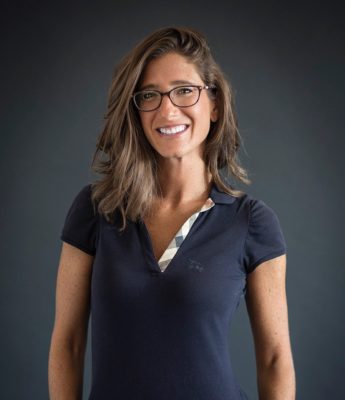
Service Learning in Aid of People Experiencing Homelessness: Student-Run Emergency Housing Unit of Phil

SREHUP founder Stephanie Sena
After listening to an NPR report on a Boston homeless shelter run by Harvard and Cambridge students, Villanova University Professor Stephanie Sena was inspired to found the Student-Run Emergency Housing Unit of Philadelphia (SREHUP). The non-profit organization provides emergency housing for people experiencing homelessness. The shelter is staffed by college students whose service learning experience teaches them the causes of, and possible solutions to, homelessness.
A Philadelphia professor saw students’ need for service learning and community involvement
After teaching at Villanova for many years, Sena felt students were sheltered from real-world problems such as poverty, homelessness and inequality. She wanted to get them thinking about their world and what they could do to advocate for social justice. Over a spring break, Sena took 20 of her students to stay in the Harvard-run shelter and see how it ran. “It was a research and fact-finding mission. We hung out there for a week and fell in love with it,” she said.
Restoring a resource for people experiencing homelessness
They launched their Philadelphia program in November 2011. There was a dramatic need for housing in the area. A recently closed shelter, The Ridge, had housed about 300 people. After experimenting with several locations and formats, SREHUP now operates a shelter for men in the basement of Arch Street United Methodist Church on North Broad Street in Philadelphia. The organization serves about 30 people on any given night.
All residents of the shelter are sent to SREHUP by Project Home, who has a representative to check people in each night and hold service to a high standard. Project Home also provides a social worker who works in tandem with SREHUP to find work and permanent housing solutions for shelter clients.
Service learning: What students achieve in SREHUP
“We have about five student volunteers each night from eight to nine Philly regional universities,” said Sena. Each school with an SREHUP chapter is responsible for giving students an overview of how the program works and setting expectations for volunteer duties.
Students serve and clean up breakfast and dinner each day. They heat up prepared meals donated by professors and families and do things like make side salads, cut fruit, and butter bread.
“The volunteers and men really get to know each other during their time together and often form a friendly bond throughout the shelter’s season,” said Ellari Hillard, a senior in Villanova’s Chemical Engineering program.
SREHUP participants serve meals, organize volunteers and aid in day-to-day shelter administration
An experienced SREHUP student serves as shift leader. He or she supervises activities and teaches volunteers about the organization’s history, Project Home’s involvement, and the ways they can contribute to the mission.
Students can also serve as volunteer directors. This group works on projects including:
- Orchestrate daily food donations and pickups
- Plan fundraisers
- Organize the volunteer schedule
- Coordinate grocery runs for staples like milk and cereal
What students learn as homeless shelter staffers
“As a part of the shelter staff, you learn to listen to all people with an open mind and heart, and that a little love and compassion goes a long way,” said Hillard.
Sena has received interest in this service learning model from other educators. “Universities have called and said, ‘We want to do this here; we don’t know how. Can you help us?’ It’s so hard to do that ad lib,” she added. “So I need to sit down with the board, create a booklet, a how-to guide for universities to do this and potentially go to those universities to give workshops.”
Aside from contributing to their community and expanding their knowledge and experience, Hillard believes the program also teaches students important skills to use in their personal and professional lives. “It is hard to volunteer at SREHUP and not develop communication skills, open mindedness, and compassion,” she said.
The organization is now approaching its five-year anniversary. “That’s an exciting milestone for us,” Sena said. “We do want to grow and expand.”
Homeless students and families face daunting educational challenges
In addition to providing service learning for students, SREHUP has taught Sena a lot as an educator. She has a deep understanding of how a lack of permanent housing can impact families with school-age children. “If they are housing or food insecure, that creates another layer of stress,” she said. “With that level of stress, students are not able to do any real work in school.” She also learned this issue isn’t limited to the poor areas of a city. Even in affluent districts, teachers should look out for children who struggle.
Homelessness is also problematic for families because of state laws that define who can attend school. In some states, families who are not paying taxes or who don’t have an address are not eligible to enroll their children in public schools. “That is a significant problem we see throughout the country in different states. I spoke to someone in the Upper Darby school district; his job is to go to homes to make sure that the people who say they live in those homes actually live there,” said Sena.
“He said it was a problem because if a family cannot pay their rent, they may move in with another family. Sometimes there are homes occupied by multiple families, but only one family is paying taxes on that property; therefore the school is educating too many children for that one home,” she continued.
Supporting homeless students and families: tips for teachers
Even if homeless children are in school, other obstacles can make it difficult to learn. Teachers who have students experiencing homelessness must stretch their limited resources to ensure that everyone in their classroom has enough to eat, school supplies, and the ability to complete their homework without reliable computer or internet access. “Sometimes libraries have a long wait to use a computer and may have a limit for how long students can use the library computer,” noted Sena.
She offered tips for teachers on helping homeless students and their families.
- Do your own research on homelessness, particularly how it affects children. More specifically, research about homelessness in your community, what children and families face in the schools once they are homeless.
- Look up food, shelter and service resources available for homeless families in your community.
- Reach out to local shelters and say, “I’m a teacher in this area. I’d like to learn how to serve my homeless students. Do you have resources?”
- Be sensitive to children in the classroom who are housing or food deficient, identify who they are, bring in food for them, and help them after school with homework.
“This is a problem that affects schools throughout the country. It can happen even in wealthy districts,” concluded Sena.
Erin Flynn Jay is a writer, editor and publicist, working mainly with authors and small businesses since 2001. Erin’s interests also reach into the educational space, where her affinity for innovation spurs articles about early childhood education and learning strategies. She is based in Philadelphia.
Categorized as: Current Events
Tagged as: Postsecondary (Advanced Education)
